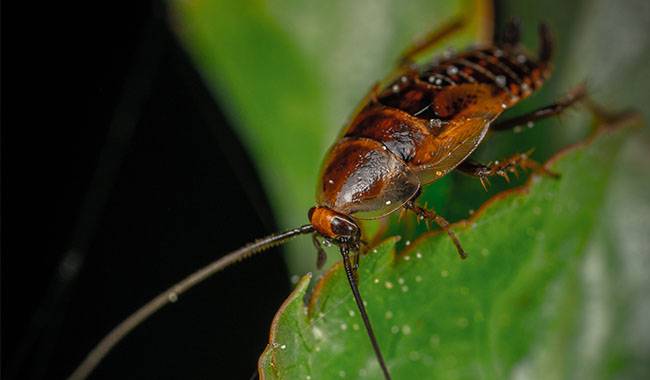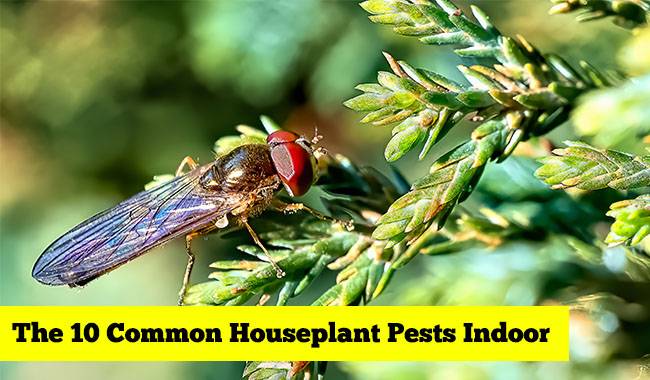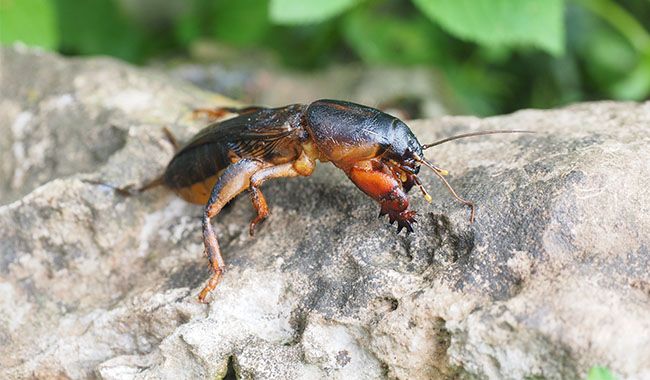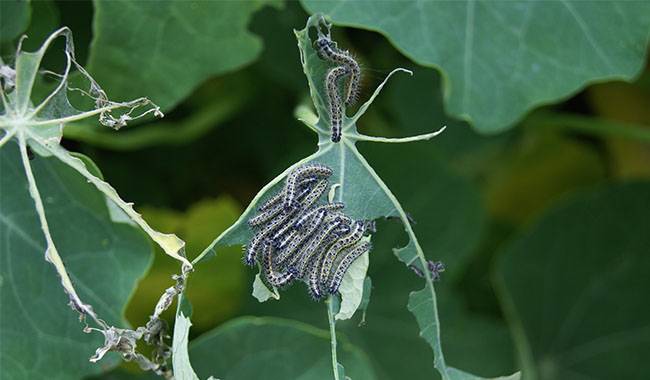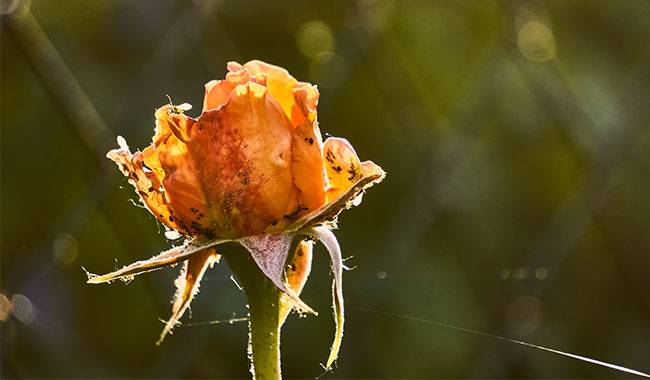
Roses are a true ornament in the garden and, like all plants, are susceptible to damage from pests, including aphids. However, roses have long been considered the queen of the garden because of their beauty and wonderful fragrance. Flower lovers will always find a corner in the garden for their favorite flower and consider the time spent tending to it to be the best time. Hoeing and fertilizing, the mistress constantly whispers gentle magic words as the grateful flowers bloom more lushly and envelop the mistress with a subtle fragrance. In this article, you will learn about aphid and pest control on roses.
PEST DESCRIPTION
Aphids are small pests of plants, 0.5-2.0 mm in size, belonging to Homoptera. They can be seen with the naked eye in the green parts of the plant. The species can be divided into green, gray, orange, and black groups of pests that occupy the entire plant in swarms. The body is ovoid and has long legs, which the insects use rather reluctantly. Aphids are sucking pests, so the head has a distinct mouthpart with a proboscis. There are wingless and winged forms. Winged aphids carry a viral disease in flight that can cause serious damage to roses and other plants in the garden.
EXTERNAL SIGNS OF APHID INFESTATION
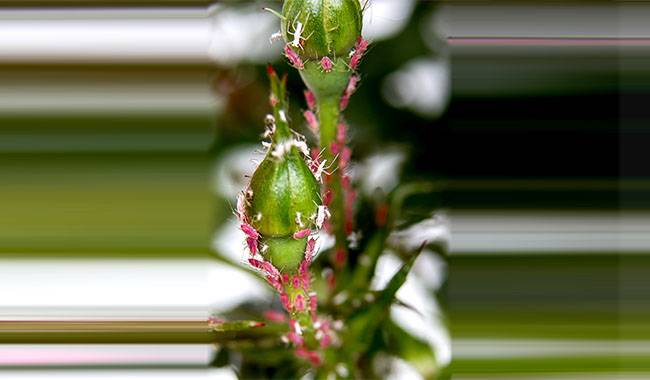
The external signs of aphid infestation are as follows.
- Aphids suck the sap, which helps to deform the tips of buds and shoots. Sometimes the damage begins with the curling of the leaves.
- The entire plant becomes covered with a liquid, glossy coating that has a sweet smell. It is called nectar. It is the favorite food of black garden ants.
- The appearance of ants scurrying around all the organs of the rose bush indicates the arrival or hatching of an aphid colony.
- The foliar apparatus of the rose becomes thin and twisted, the leaves turn yellow and the buds fall off before they open.
APHID SEVERITY
Aphids are dangerous pests. Females produce 150-200 new aphids every 2 weeks. If immediate action is not taken, the proliferating aphids can destroy the green parts of the plant in a short time, causing a sharp decline in the decorative quality of the shrubs. They not only damage the plant itself but also spread dangerous diseases, such as viral ones. Black smut fungi multiply rapidly on sugary excreta and cover leaves with continuous mycelium, thus reducing photosynthesis. By migrating to garden crops, they infect trees with rots and other harmful diseases that kill perennial orchard crops. It is aphids that are thought to transmit more than half of the known plant pathogen viruses.
PREVENTIVE MEASURES
Aphids cannot be cured once and for all by treating diseased plants. Plants must be constantly inspected, and preventive measures are taken to protect them from pests, including aphids.
Preventive measures include agricultural measures such as siting the rose garden, lighting, proper watering, and fertilization. Pay special attention to the care of roses. They need.
- systematic inspections to detect pests.
- remove dead leaves, flowering rose buds, and prune weak branches more frequently affected by pests and diseases.
- Wash plants regularly (once a month) with clean water or soapy water. Aphids are slow-moving and usually do not return when washed down with a jet of water and will die.
NATURAL ENEMIES OF APHIDS
Natural enemies of aphids are ladybugs, hoverflies, earwigs, ground beetles, lacewings, ichneumon fly, aphid lion, weevil bugs. Aphids do not ignore birds that settle in the garden. Insecticidal plants play an active role.
Ladybugs and syrphid flies are considered disinfectants for gardens. Adults eat aphids all day long. The mobile larvae of aphids also feed on aphids. A single larva may eat up to 200 in a single day. The favorite habitats of the beneficial insects (mentioned above) are umbrella plants (wild and garden carrots, dill, fennel, and others) and flowering plants, especially yellow and orange. To attract beneficial insects in flower beds, mixed beds mowed lawns, and flower beds, you can place garden flowers that deliver flowering from early spring to late fall. Garden buckwheat, dill, marigolds, marigolds, licorice, salvia, wild roses, sweet clover, lavender, thyme, etc. should certainly be included. Of course, these measures will not eliminate aphids. Still, the natural balance between beneficial and harmful insect populations will play a positive role in protecting roses from aphids and other pests.
Birds kill the largest number of pests, including aphids. A garden is considered lifeless if it does not have birds greeting sunny mornings with their songs and working all day tirelessly to destroy pests. Bird feeders, nests, and other types of bird accommodation in the garden make the garden beautiful and provide natural protection from pests. It is a good idea to put several containers of wood chips in the rose garden (not only that). Earwigs are a major food source for aphids, and they are happy to settle there.
APHID CONTROL MEASURES
Aphids are classified into biological, physical, chemical, and folk remedies.
Biological methods
Biological methods include using natural enemies of the pest and are explained under the headings “Preventive measures” and “Natural enemies of aphids.”
Physical methods
Physical methods include.
- manual collection (if aphids appear only once, they are crushed and not removed from the plant). If the aphids settle on the buds, rub the buds with the palm of your hand from the bottom upward. If the numbers are small, almost all the aphids on the buds will be killed.
- Rinse well with a column of water. Aphids are stationary and will die when washed away with water. Flushing can be done with a clean column of water while watering or with a specially prepared solution.
Chemical methods
Roses are loved for their unique beauty of bloom and fragrance. It is not advisable to use chemical methods on flowering plants. All chemicals have a specific and always unpleasant odor (a warning of danger). It does not make the fragrance of roses appear, and inhalation of insecticides is unlikely to improve the health of the host.
Suppose this is not possible and the use of insecticides is unavoidable. In that case, natural insecticides, some of the products on the market, are based on the all-natural Dalmatian chamomile and are relatively less damaging to the environment. Other natural or organic insecticides are listed on the authorized list.
Aphids can be controlled with contact chemicals. If the solution comes in contact with the insect, it will kill it (e.g., florfenicol, carbosulfuron). Another group of insecticides is the intestinal ones. Once they enter the insect’s digestive system, they cause poisoning and death. The most effective intestinal agents are Actellic, Agravertin, etc. Insecticides like Actara, Confidor-Extra are effective when applied to soil and sprayed on vegetated plants.
Insecticides always have information on their packaging about preparing a working solution and which concentration to use. Before using any insecticide, always read the instructions about its use. Be careful. Insecticides are bad for your health! When using insecticides, you must cover your mouth and nose with a mask, wear gloves, a jacket, and goggles. Change your clothes and take a shower after work.
TRADITIONAL APHID CONTROL METHODS
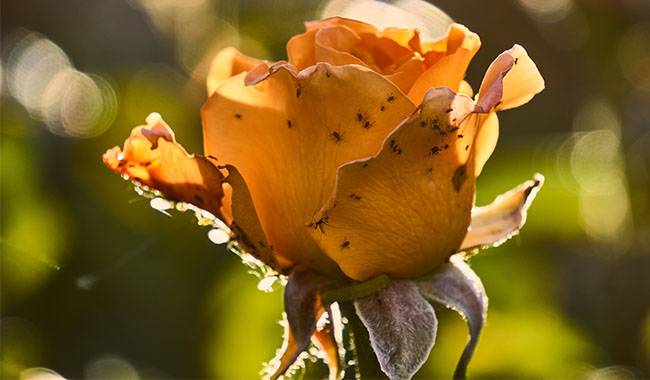
Folk methods used to kill pests are more “democratic.” For example, they generally do not kill aphids but simply repel them with their odor and the unusual smell of decoctions and infusions.
Aphids cannot tolerate the smell of foreign Dalmatian chamomile or fennel. Lavender in a rose garden will drive aphids away, and the bitter pepper of an infusion is unlikely to smell good. Velvet and sweet-smelling geraniums, goldenrod, and marigold not only drive pests out of rose beds, but in combination with roses, they enhance the decorative effect of the beds.
Infusions and decoctions of various insecticidal herbs are given in the literature, including fresh potato leaves, garlic cloves, onion heads, chamomile, aconite, barnacles, marigold, bellflower, delphinium, tobacco, Japanese sumac, yarrow, bilberry, and others.
Prepare a 0.26 gal (1 liter) concentrate, 200-250 g of grass is needed, poured into hot water or boiled for 0.5 hours, and left in an airtight container for 2-3 days. The concentrate is then filtered, diluted at a ratio of 1:3-1:4, and sprayed on the plants. If necessary, more concentrates can be made, observing the same ratio.
Add green soap or laundry soap (without bleach) to all decoctions. The soap broth provides better access to the nutrient organs of the plant on which the aphids depend. Then, spray the affected plants, usually in the evening, when the beneficial insects (bees, wasps, ladybugs, bumblebees, etc.) have finished their work for the day.




